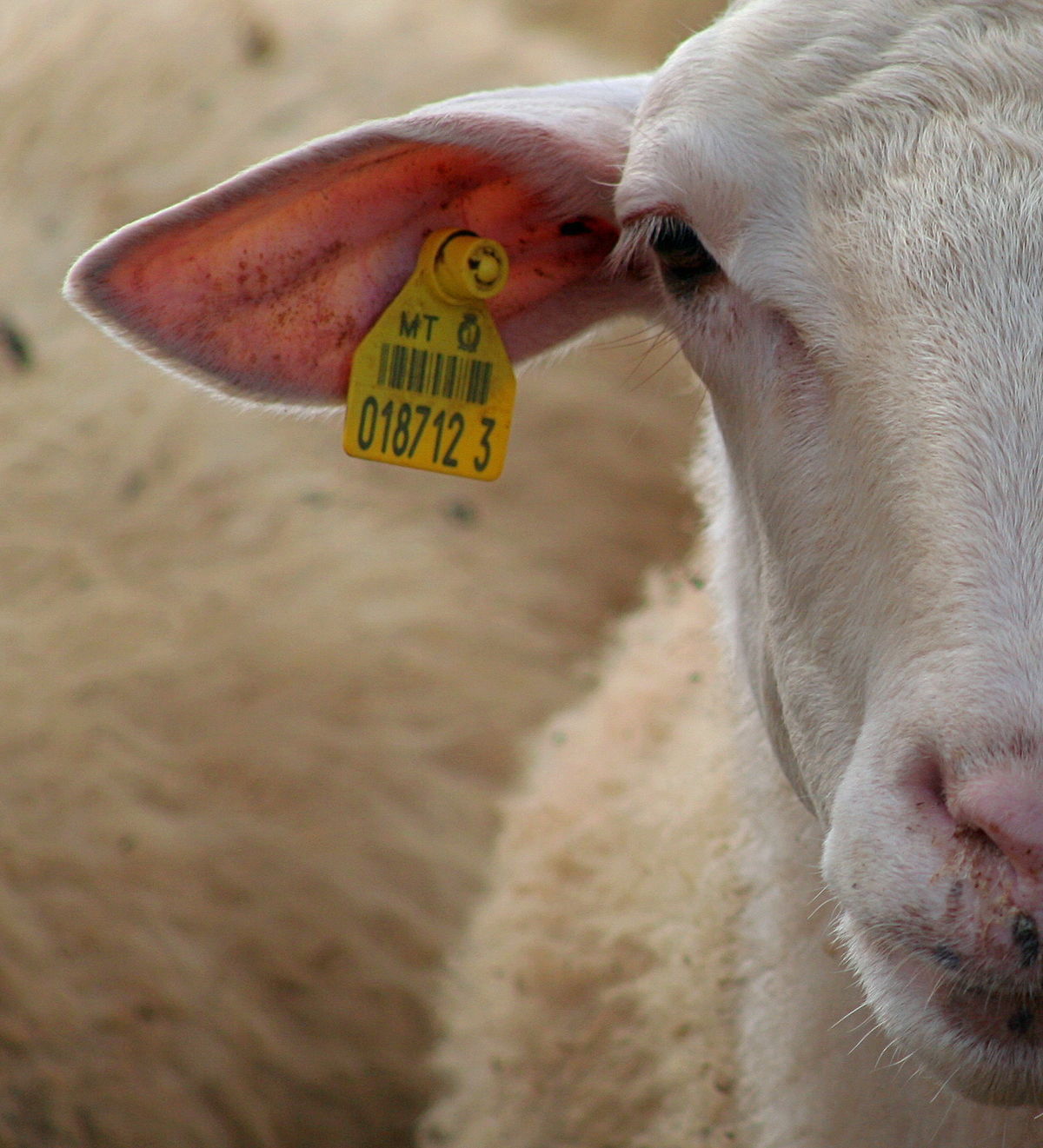Main Content

Proper identification is an important aspect of raising sheep. Whether you are a 4-H member raising only one market lamb per year or working toward establishing your own breeding operation, you will need to know U.S. Department of Agriculture (USDA) identification requirements and NJ Division of Animal Health rules.
Scrapie Identification is required by the USDA for almost all sheep and lambs in order to control this deadly contagious disease. A “Premise Identification Number” is required before a lamb can leave the farm where it was born. Scrapie tags carry the owner’s premise identification number on one side and a sequential number on the other side identifying the individual sheep for record-keeping purposes.
To get a premise ID and to order Scrapie ear tags, call 1-866-873-2824. Plastic tags are free for the first order for producers participating in the Scrapie Flock certification program. All sheep over one year of age are required to have tamper-proof ear tags, tattoos or microchips.
The USDA recommends that if you are in doubt as to whether your sheep needs a tag or not, then tag it to be safe. Any sheep leaving your farm should be tagged. Reputable breeders tag their lambs before they leave the farm. If the lamb you are buying is not tagged, ask that it be tagged before you pick it up.
If you are crossing state lines, you also need an Interstate Certificate of Veterinary Inspection (ICVI) for your animal(s). The ICVI must be issued by an accredited veterinarian and must include the animal’s tag number.
Upcoming Small Ruminant Workshop, November 14
Rutgers Cooperative Extension and the USDA Animal and Plant Health Inspection service have an event coming up Thursday, November 14 that will be very helpful in explaining ID tag and health requirements in sheep. Small Scale Animal Production Series: Small Ruminants will take place from 6:30-8:30 p.m. at the Warren Grange, 101 Asbury Broadway Road, Washington, NJ. See the Small Scale Animal Production Series- Small Ruminant Flyer for more information. Register by November 12 by emailing Stacie Fischbach, agriculture@co.warren.nj.us, or by calling 908-475-6505.
A national system of animal identification has been in the works for a long time, so movements of animals can be traced in the event of a disease outbreak or an act of bio-terrorism. For sheep, the program will most likely be an ear tag that is cross-linked with the scrapie eradication program. An electronic ID is being developed and will most likely be required by the USDA in the future.
In addition to official ear tags, flock identification tags can be very useful in herd record keeping, which is essential for good flock management. Although record keeping will be explored in depth in next month’s blog post, in short, production records allow the producer to monitor flock performance including growth rate, lambing ease, mothering ability, lambing date and sex of lambs. Flock ID numbers are necessary for that.
Sheep identification should be permanent, easy to read at a distance, and easy to apply. Ear tags are the most common, including plastic and metal in various sizes and shapes, DNA tags and RFID (electronic tags). There are small brass tags for newborn lambs, but the lamb must be caught to read it, and they are easily ripped out. Swivel and looping tags work well for lambs and are easier to read than the small metal tags. Allflex and similar brands make a two piece plastic tag in many different sizes, shapes and colors. They are easier to read with a fairly good retention rate in a smaller size for sheep and lambs.
Other methods of sheep identification include DNA tags, tattoos, ear notches, and electronic ID. Tattoos are permanent but are difficult to read at a distance. Ear notching as in swine can be used but is more commonly used to determine the birth order of multiple births. Electronic ID (RFID) technology is rapidly growing. Electronic ear tags are the most common form of electronic ID. A microchip and coiled copper antenna is encapsulated in a standard plastic ear tag. For sheep bound for slaughter, another option is a rumen bolus, or large pill, that can be swallowed and then easily removed by the packer.
Ear tags should be placed between the middle and lower cartilage ribs in the ear and far enough out on the ear to allow for later wool growth. In addition to identifying an individual animal, ear tags can contain other useful information about the animal. Tags can be numbered in order or the first digits could contain the year and then the birth order. If desired, different tags or colors can be used for different birth years, breeds, sires or owners.
Sometimes temporary identification is desirable. If so, paint branding, marking crayons, or spray markers can be used to identify sheep and lambs for several weeks.
Whatever form of identification you select, be careful that it meets USDA and state laws as well as your own needs as a producer. Next month’s blog on record keeping will help you make the right choices.
By Susan Miller, Hunterdon County 4-H Volunteer, Rutgers Cooperative Extension